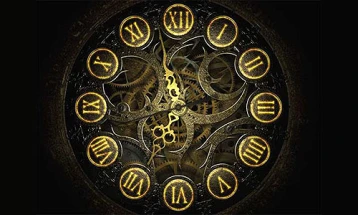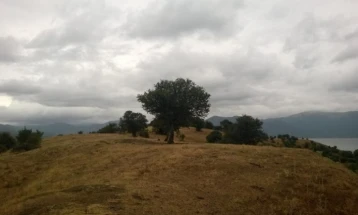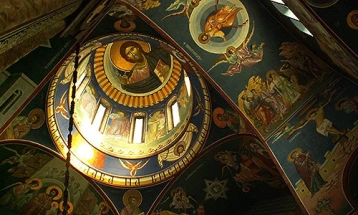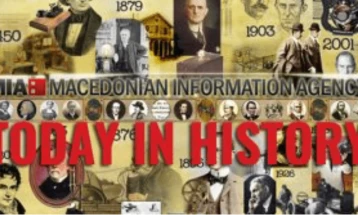Religious calendars
- 26 February 2023 (MIA)

26 February 2023 (MIA)
Macedonian Orthodox Church Calendar
Our Holy Mother, the Martyr Eudocia – Forgiveness Day (Prochka)
Living in Heliopolis, a city of Phoenicia, during the reign of Trajan, she was at first a great harlot, then a penitent, a nun and finally a martyr. She gained great wealth from her harlotry. The reversal of her life was brought about, through the providence of God, by an elderly monk, Germanus, and that unintentionally. Coming to Heliopolis in the course of his work, he stayed at the house of a Christian woman whose home abutted onto Eudocia’s. When at night he began, as was his monastic custom, to read the Psalter and a book on the Dreadful Judgement, Eudocia heard him and stood listening attentively to his every word until the end. Fear and dread took such hold on her that she remained awake until daybreak. As soon as it was dawn, she sent a servant to beg that monk to come to her. Germanus came, and they began a long conversation on that which the old monk had been reading the previous night, and especially on faith and salvation. The result of these discussions was that Eudocia asked the local bishop to baptise her. After her baptism, she gave all her goods to the church, to be distributed to the poor, dismissed her servants and slaves and retired to a woman’s monastery. She so devoted herself to the monastic life – to obedience, patience, vigils, prayer and fasting-that after thirteen months she was chosen as abbess. She lived fifty-six years in the monastery and was worthy in the eyes of God to be given the gift of raising the dead. When a persecution of Christians arose under the governor, Vin-cent, holy Eudocia was beheaded. Here is a wonderful example of how a vessel of uncleanness can be purified, sanctified and filled with a precious, heavenly fragrance by the grace of the Holy Spirit.
Catholic Calendar
St. Porphyrius
Bishop of Gaza in Palestine, b. at Thessalonica about 347; d. at Gaza, 26 February, 420. After five years in the Egyptian desert of Scete he lived five years in a cave near the Jordan. In spite of his impaired health, he frequently visited the scene of the Resurrection. Here he met the Asiatic Mark, at a later date a deacon of his church and his biographer. To effect the sale of the property still owned by Porphyrius in his native city, Mark set out for Thessalonica and, upon his return, the proceeds were distributed among the monasteries of Egypt and among the necessitous in and around Jerusalem. In 392 Porphyrius was ordained to the priesthood, and the relic of the Holy Cross was intrusted to his care. In 395 he became Bishop of Gaza, a stronghold of paganism, with an insignificant Christian community. The attitude of the pagan population was hostile so that the bishop appealed to the emperor for protection and pleaded repeatedly for the destruction of pagan temples. He finally obtained an imperial rescript ordering the destruction of pagan sanctuaries at Gaza. A Christian church was erected on the site of the temple of Marnas. In 415 Porphyrius attended the Council of Diospolis.







